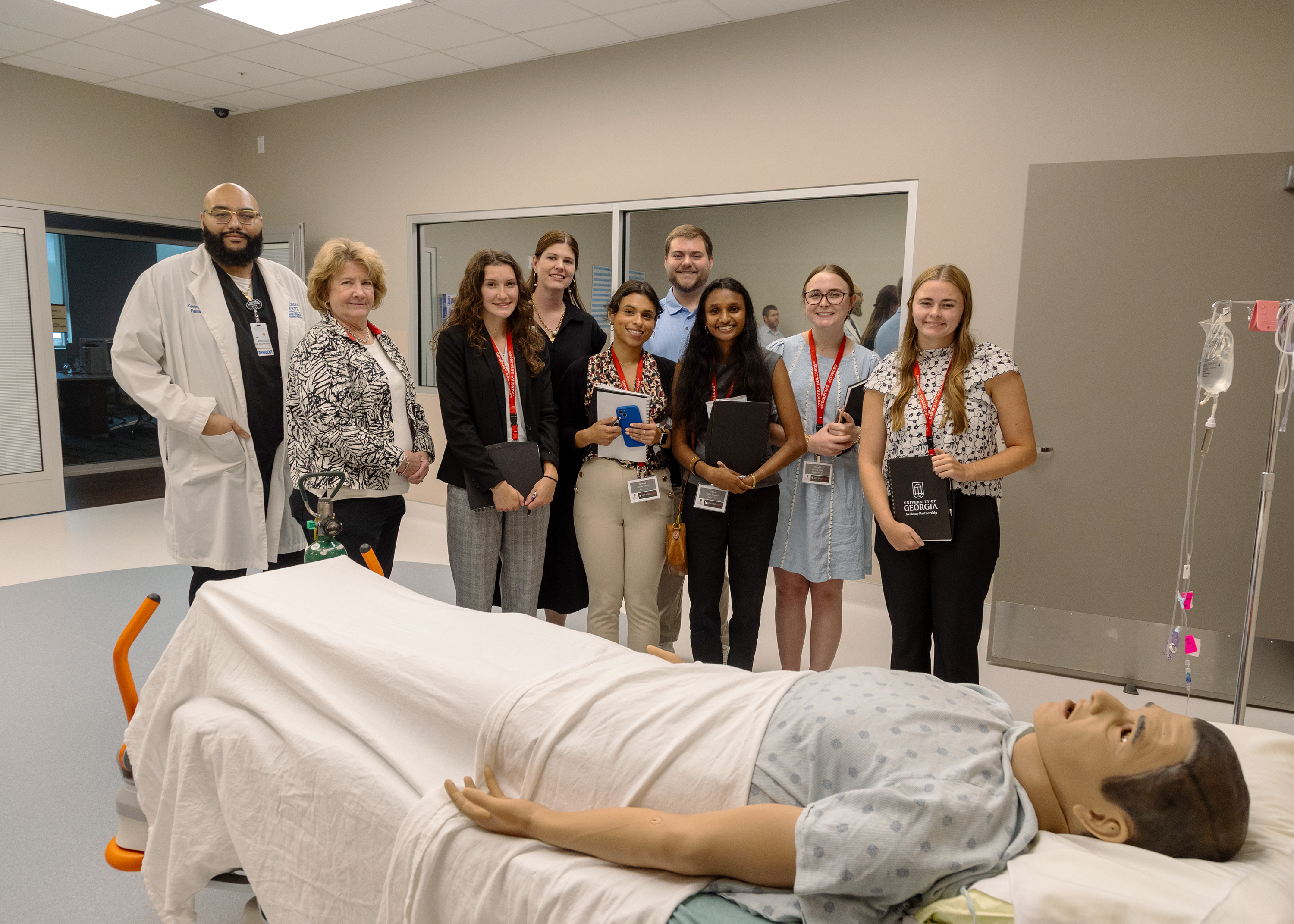EDDIE SEAGLE: Planning your wildlife landscape
Published 2:15 pm Saturday, June 1, 2019

- Eddie Seagle is a Sustainability Associate, Golf Environment Organization (Scotland), Agronomist and Horticulturalist, CSI: Seagle (Consulting Services International), Professor Emeritus and Honorary Alumnus (Abraham Baldwin Agricultural College), Distinguished Professor for Teaching and Learning (University System of Georgia) and Short Term Missionary (Heritage Church, Moultrie). Direct inquiries to csi_seagle@yahoo.com.
“Advice from a tree: Stand tall and proud. Go out on a limb. Remember your roots. Drink plenty of water. Be content with your natural beauty. Enjoy the view!” Ilan Shamir. “Advice from an owl: Stay focused. Be “whoo” you are. Trust in a wise friend. Live off the land. Glide through the dark times. Be observant. Life’s a hoot! Your True Nature. “Advice from a squirrel: Look both ways when you cross the road. Plan ahead. Stay active. Eat plenty of fiber. Spend time in the woods. Go out on a limb. It’s ok to be a little nuts!” Ilan Shamir.
The temps tell us it’s time for summertime stuff and that means getting outside and enjoying all that nature has to offer. Exercise care and pace yourself during the heat of the day. Select the cooler hours of morning and evening as your journey takes you throughout nature.
Nature offers such a diverse theatre of plants, animals and elements. Naturally, live music and movies are created by nature each day through every living creature in your own backyard. In planning your wildlife landscape, add color and movements with sounds that make your home landscape appear more alive and vibrant in your quest to welcome birds and butterflies into your space. Thus, the arrival of birds, butterflies and other forms of wildlife to your home grounds is an indication that nature approves and accepts your involvement in her plan.
Among nature’s tenants are songbirds in the shade trees, hummingbirds and bees on the flowers, butterflies in the air, and squirrels and chipmunks on the lawn and in the beds. Also, occasionally a rabbit, deer or fox might wander across your grounds. Furthermore, seeing mockingbirds playfully fighting in flight, watching the bluejays fight a hawk as it tries to rob a nest, or observing an eagle and a hawk fighting over the same prize in mid-air, nature offers so very much. Many sights and sounds provide us surprise, entertainment and enjoyment as nature sets the stage through music and movies in a way that takes us into the daily lives of all these living creatures.
Although all gardens naturally attract some forms of wildlife, you can encourage a greater volume and variety of activity by planting specific trees, shrubs, and flowers. In return for your visual, hearing, and emotional gratifications, you provide them with food and shelter. A small number of selectively chosen plants will appeal to a wide range of nature’s inhabitants.
A wildlife garden should be located near your observation point from the front porch, back deck, sitting garden, or through a window for ease of enjoyment. However, any expanse of glass reflecting vegetation is likely to deceive birds by becoming a crash site and injuring the welcomed guests. Prevent this potentially dangerous occurrence by placing chimes or other decorative items near the window, or designing patterns on the glass that would minimize such crashes.
The key to landscaping for wildlife is plant groups or clusters rather than individual plants. A single tree or shrub is rarely sufficient screen to be adequate cover for wildlife. The better microenvironment to attract wildlife includes a combination of trees, shrubs, groundcovers, flowers, ornamental grasses and lawns with a careful selection of birdhouses, bird feeders and bird baths placed strategically throughout the site. As you sit quietly in or on your observation base, be sure to have a set of binoculars, a camera and access to the internet. The world of nature will quickly unfold before your eyes as her stage gives you the opportunity for a moment of complete gratification as you document such an awesome display of natural talent.
As we choose plants for seasonal color throughout the year, we are also providing food and shelter for our wildlife over the same time span. Choose flowers that will provide nectar-feeders with food during each season, and plants that flower at different times. Whether you are aware of it or not, your landscape already houses several insects and seed-bearing plants. Just think of the thousands of seeds developed from one crabgrass plant. This scenario provides food sources for most wildlife creatures, especially birds.
Some trees and shrubs that are favorite food sources for birds are flowering crabapple, Oregon grape holly, pyracantha, and chokeberry. Sunflowers are a favorite in seed production.
Bird preferences for nesting purposes include Japanese hollies, cotoneaster, junipers, Japanese barberry, Washington hawthorn, pyracantha and honeysuckle. Birds need exposed perching places with dead twigs and small snags being most beneficial. Hummingbirds eat insects such as aphids, but also need large amounts of nectar to meet their high energy requirements (thus hummingbird feeders are a plus). They respond best to red, orange and pink flowers that are tubular in shape. Their long tongue is adapted to penetrate and pollinate blossoms like trumpet vine and fuchsia. Hummingbirds are very belligerent and territorial. Thus, grow flowers in several locations throughout the property. Popular annuals for sunny sites include salvia, zinnias, snapdragons, and sweet william. Perennials for sunny sites include bee balm, penstemon, butterfly weed and red hot poker. In partial shade include columbine, bleeding heart or coral bells.
Plantings for butterflies include butterfly weed, butterfly bush, mock orange, lilac, weigela, and button bush. Perennial flowers for a butterfly garden include phlox, coreopsis, rudbeckia, verbena, lantana, and catnip. Annuals include alyssum, asters and sunflowers. Although butterflies are attracted to tubular, nectar-bearing flowers, they also need flat flowers where they can rest. A good variety of flowers, shrubs, and trees will provide plenty of resting sites.
Attracting squirrels, chipmunks, raccoons, rabbits, deer and other animals to your landscape can create both pleasure and torment. While interesting to watch, they may be destructive. You make the choice based on your own desires and priorities.
You may supplement your plantings with shelters and feeders. From bird houses, gourds, and feeder units to bird baths, these structures will be used by your new neighbors, the wild friends. In the world of wildlife, news travels fast. Thus, plants and flowers and beyond can be beneficial to humans and creatures alike.
As you plan and develop your wildlife landscape, it will become filled with various species of birds, butterflies and small animals within a few seasons. It will become a true sanctuary from which your new “wildlife neighbors” will provide you with hours of enjoyment through watching, learning, understanding and being constantly amazed. Always take the time to hear birds singing in the trees, as well as the bird singing in your soul.
Think in terms of native and sustainable plants in the landscape. May this bit of awareness ignite your desire to learn and ask questions, encourage you to further apply your gained knowledge, and bring you to further realize that environmental stewardship and sustainability should be at the foundation of all your home landscape activities.
“I will keep you and will make you to be a covenant for the people and a light for the Gentiles.” Isaiah 42:6. “Let them give thanks to the LORD for his unfailing love and his wonderful deeds for men.” Psalm 107:31. “Remember your leaders, who spoke the word of God to you. Consider the outcome of their way of life and imitate their faith.” Hebrews 13:7.
Eddie Seagle is a Sustainability Associate, Golf Environment Organization (Scotland), Agronomist and Horticulturalist, CSI: Seagle (Consulting Services International), Professor Emeritus and Honorary Alumnus (Abraham Baldwin Agricultural College), Distinguished Professor for Teaching and Learning (University System of Georgia) and Short Term Missionary (Heritage Church, Moultrie). Direct inquiries to csi_seagle@yahoo.com.





